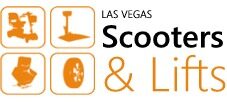<<< Back | Scooters | Power wheelchairs |
Not sure what mobility product you want or need?
What’s the difference between a scooter and a power wheelchair?
There two types of battery powered mobility devices that help people with walking issues, these are commonly known as mobility scooter and power wheelchairs. Below we will explain some of the main differences between the two types to help you better understand the differences and hopefully choose the right one.
Mobility Scooters Mobility scooters typically come in many different variations, wheel configurations, shapes and sizes to accommodate different size people.
Wheel Configurations
Size
Weight Capacity
Battery Options and Sizes
Tiller and Operating controls
Speed and Range
Wheel Configurations:
Most scooters come in either a 3 or 4 wheel configuration with either one or two wheels at the front of the scooter. Check out our guide to the upsides and downsides of 3 and 4 wheel scooters in the section what scooter is right for me.
Size:
All mobility scooters are categorized into the following; Small, Medium, Light Weight Compact Foldable, Large, Heavy Duty and Recreational. Your size and weight would be a major contributing factor when choosing the size of scooter.
Typically, smaller transportable (disassemble) scooters suit a smaller, lighter weight person. With the pieces these types of scooters being lighter in weight it makes for lifting and transporting in a vehicle easier. Smaller scooters tend to have lower weight capacities, shorter drive range, smaller drive body part components and shorter in width and length which makes for smaller foot and floorboard space.
Weight Capacities:
Smaller scooters have weight capacities that are typically between 250 and 300lbs. Weight capacities are not only just for the structural integrity of the scooter, but the drive components and drive ranges are tested and rated for the maximum rated weight capacity. Using a scooter that is not rated for your weight will reduce the life of the drive and cause damage to the unit. Using a scooter that isn’t rated for your weight will invalidate any manufactures warranty.
Battery Options: There are mainly two types of batteries used in mobility scooters. SLA (sealed Lead Acid) and GEL AGM deep cycle batteries and also Lithium Ion. SLA and GEL AGM batteries are heavier, have short life spans but are normally cheaper to replace. Lithium Ion tend to be lighter in weight, last approximately a minimum of five years, charge quicker but are more expensive to replace.
Other options you can get for your mobility scooter are standard short to medium range battery packs, Extended Range Battery Packs, Airline Friendly Batteries (lithium Ion) which are governed by FAA regulations.
Tiller handle and Operating Controls Mobility scooters are normally operated with using either the operators’ thumbs or fingers via a multi-directional throttle paddle or sometimes known as a “wigwag” from the scooters tiller (handlebars). The throttle is used like a gas pedal in a car to increase and decrease the forward or reverse movement of the sooter. The tiller (or handlebars) also come in two shapes; straight handlebar tiller with thumb operated throttle or delta shaped (D-Shape) handlebar tiller with finger or thumb multi-directional throttle control.
Choosing the right tiller configuration all depends on your comfort on how to operate the throttle either with you thumbs or fingers such as arthritis or other hand issues.
Speed and Range Smaller scooters tend to have a lower maximum top speed of around 4 mph whereas mid-size, large, heavy duty and recreational scooters can have a higher top speed from 5mph up to 15 mph or more depending on brand. Range of travel depends on several factors like age of the device, type of terrain (inclines) heat, speed and age of batteries. Most manufactures give a drive range with an average weight person on flat level ground.
